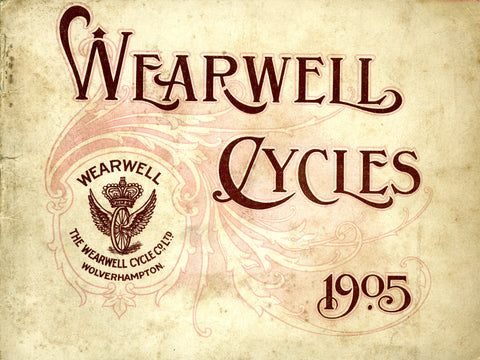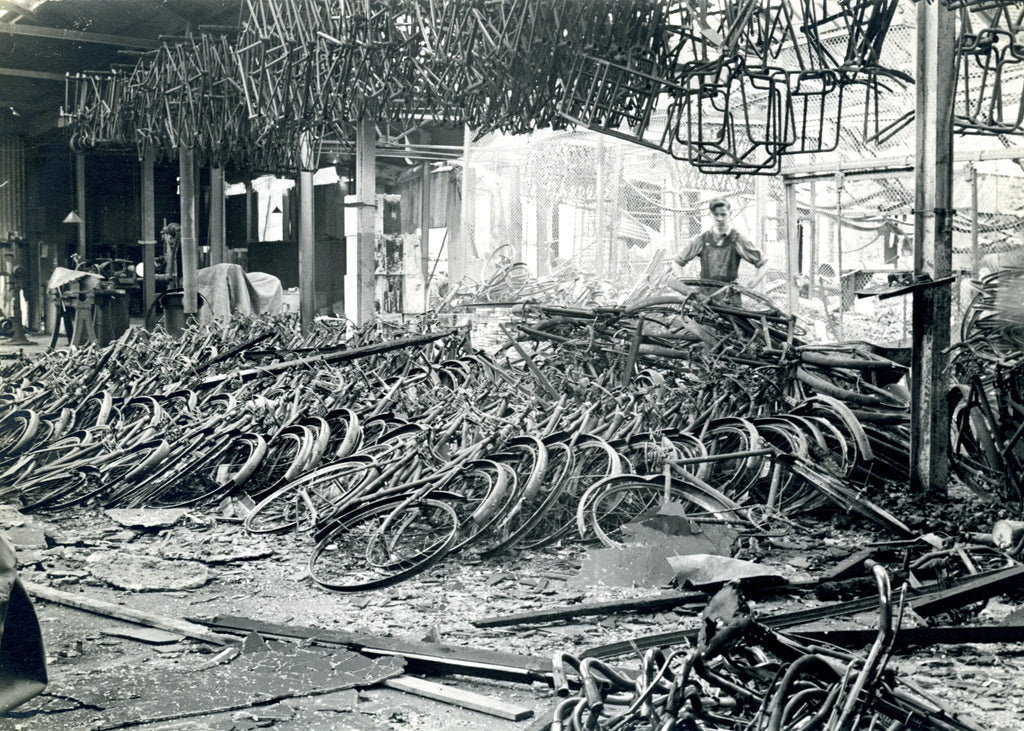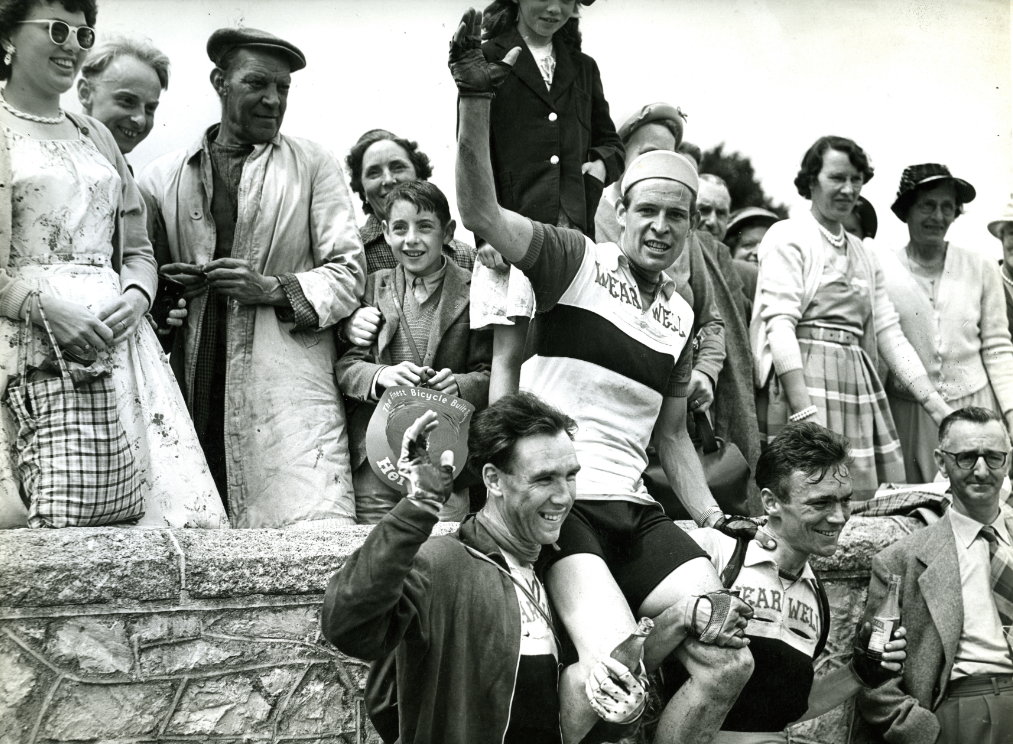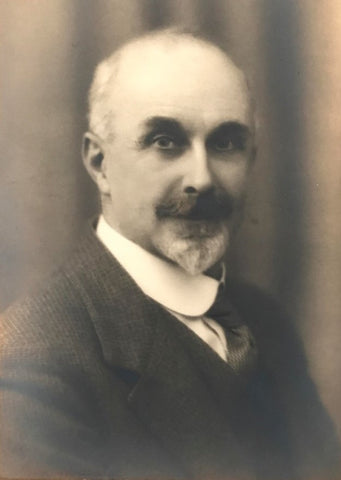Our History

Wearwell: A History
As with all good stories, the rise of Wearwell is littered with family feuds, corruption, deceit, scandal and triumph over adversity. Our history is a melting pot of characters, locations, disasters, wars and economic crises - punctuated with moments of great vision and bravery from those at its helm.Wearwell really is the beast that just won’t die. Its dedication to providing cycling lovers the world over with high quality, iconic products has spanned generations, and we’ve no intention to stop that now.
Grand beginnings (1867 - 1889)
It’s 1856 and Henry Clarke, a blacksmith from Wolverhampton, is on his way back from the Crimean War. A short stopover in Paris offers up some time to explore the city streets and it’s here that young Henry is passed by a strange wooden contraption that catches his eye. He stops and stares, bemused and intrigued all at once. This is no ordinary cart. He notes the two wooden wheels, affixed to an angular wooden frame and a leather saddle, balanced precariously on the back. But most of all he notes the rider. Their expression a mixture of gritted determination and sheer joy, as they cruise seemingly effortlessly over the cobbles. Whatever this thing is, Henry wants one - and after some research he learns the name of the contraption. It is called a bicycle.

Wearwell Founder - Henry Clarke
In 1867, after Henry had returned to British shores, he founded the Cogent Cycle Company - dedicated to manufacturing and exporting bicycle wheels to France. Business in the 1800’s was largely a family affair, and so it was only natural that Henry’s five sons; Tom, George, William, Jack and… (of course) Henry, joined cogent to help their father take the humble bicycle to the masses.
Family Feuds (1889 - 1900)
Business boomed at Cogent in the decades that followed, and it remained a thriving family company until Henry’s death in 1889. Henry’s passing at just 56 years old left a large pair of boots to fill at Cogent, and eldest son Tom wasted no time in stepping into them. Tom was appointed as successor, and took the reigns at Cogent.Alas, the transition to a new command was far from smooth. Tom’s swift appointment as the new manager infuriated the other brothers, who felt that they had just as much right to lead the company as Tom. In a Game of Throne’s style Mutiny, the other brothers revolted - Tom was cast out from the Clarke household and exiled to Manchester where he set up a rival cycling business called the Express Cycle Company. Now more determined than ever to make the business a success without their older brother the four remaining siblings; William, Jack, Henry and George, founded a new company. It was called ‘Wearwell’ and it would stand for quality, honesty and integrity.
Scandal at Wearwell (1900 - 1911)
 Tom’s exile and the launch of Wearwell had strengthened the bond between the Clarke brothers, and they worked with a renewed sense of vigour to catapult manufacturing at Wearwell to new heights. By the early 1900s, Wearwell Company were producing over 500 machines each week, and exporting in tens of thousands.
Tom’s exile and the launch of Wearwell had strengthened the bond between the Clarke brothers, and they worked with a renewed sense of vigour to catapult manufacturing at Wearwell to new heights. By the early 1900s, Wearwell Company were producing over 500 machines each week, and exporting in tens of thousands.
Unfortunately, unbeknown to the brothers, they had a bad egg in their midst. It emerged that trusted company secretary, Mr King, had been splurging Wearwell’s hard earned pounds at the local pub, using company money to gamble at pool.
By the time William Clarke discovered that a large sum of money had disappeared from the company, it was too late. Too much had been lost and Wearwell went into liquidation in 1911, shortly before Mr King attempted to commit suicide. Worse still, William realised that Mr King hadn’t acted alone - he had help on the inside, from one of his own brothers! It was a huge blow to the family which split them apart for good.
From Wearwell to Waine (1911 - 1932)
Now flying solo, William Clarke bought another local cycling business, which he revitalised and used to reintroduce the Wearwell name to the market. In 1922 William died and Wearwell was sold to George Alexander Waine and his cousin Jack Waine.|
George Waine |
Jack Waine |
In 1928, George & Jack gifted one share of the company to each of their sons – Theo and Vincent. Together they took the reigns of what became the newly registered Wearwell Cycle Co. Ltd. Under the guidance of the Waine brothers, Wearwell went from strength to strength. Even a large fire at their Wolverhampton factory - one so big it took 8 hours to fight and caused £10,000 worth of damage - couldn’t stop them.
|
Theo Waine |
Vincent Waine |
In the summer of 32’ Wearwell was stable enough to look beyond the European market. It started its expansion into new and far flung territories, including India, Ceylon, Burma, Siam and China. Demand for the humble bicycle in India was especially high, and Wearwell exported to the country by the thousand. More than just exporting bicycles, Wearwell exported knowledge too, and before long Wearwell (India) Ltd, a wholly Indian-owned company, had started to manufacture bicycles utilising the technical expertise and production processes made famous by the Wolverhampton-based sister company.

Wearwell through the war (1935 - 1950)
The late 1930’s saw the start of wartime in Britain. Many companies' core workforces were sent off to war and Wearwell was no exception. Forced to operate with a significantly reduced workforce, Wearwell scaled back activity at the factory to a bare minimum. One night, on his way home from his new nightly duty as an air raid warden, Vincent Waine spotted a spectacular glow in the skies over the city. He noted to a friend at his side that there was ‘quite the blaze on the horizon’ before realising that the flames looked devilishly close to his own beloved bicycled factory. It was in fact his factory that was once again on fire. Much of the works were ruined beyond repair and those that could still be salvaged weren’t a priority whilst war raged on the continent. It wasn’t until well after 1945 that production was restored to normal.
Like an immortal Phoenix, Wearwell rose from the flames, and continued to prosper with success at home and abroad. By 1950 the company was producing and distributing in 40 countries around the world.

The Birth of The Tour of Britain (1951)
Despite Wearwell being set for global domination, in the early 1950’s the most exciting developments were happening on home soil. Cycle racing in Britain was on the rise and, following in the footsteps of the mighty continental epics such as the Tour de France, Giro d’Italia and Vuelta Espana, British stage races were becoming a regular and popular feature on the sporting calendar.But not everyone was happy with Britain’s approach to stage racing. Local lad, Wolverhampton bike builder and road racer Percy Stallard was frustrated that competitions were restricted to official circuits and only took take place on closed roads. Such was the difficulty in getting councils and police to approve road closures, such races were few and far between. Egged on by the support of fellow racers, Percy went rogue. He set up the British League of Racing Cyclists as an alternative to the existing National Cyclists’ Union, and offered exciting stage races under a new set of conditions.
After a nervous few years with tentative sponsorship deals, the Daily Express Newspaper finally took title sponsorship of the very first ‘official’ tour of Britain in 1951. The 14 day race was contested by regional British teams, sponsored teams made up of independent riders, and national teams from Ireland, Scotland and France.
Wearwell on the race circuit (1952)
In 1952, Wearwell sponsored and sent their first team to compete at the Tour of Britain. With a line up of Williams, Cotterill, Roberts and Drinkwater the team’s aim was to immerse themselves wholeheartedly in the cut and thrust of daily racing. Far from a gentle, experimental approach that many would expect from a team so new to the circuit, Wearwell meant business. Riding with bravery and boldness, they set out with the intention to secure their place in the breakaways as often as possible, and ultimately to challenge for stage wins.
Alas, intention doesn’t always lead to action, and the fabulous four weren’t quite as fabulous as Wearwell had hoped. Having failed to challenge for podium places in the first year, the management had no choice but to change tact. With a little extra investment, the company was able to recruit the finest independent riders in Britain at that time, and to bring them into the fold.
The Young Guns (1953)
Trevor Fenwick, Johnny Welch, John Pottier, Les Scales and Ian Greenfield made up the five-man squad in 1953. The new team line-up boasted several riders that had already performed strongly in the two previous tours, with regular podium spots and top 5 overall finishes, as well several wins on the national circuit.John Pottier became the first British rider to take the Yellow Jersey from foreign opposition, as the Wearwell team swept up other major honours - including 4 stage podium places, a 2nd and 3rd placing in the final General Classification, and an all-important victory in the team classification. Wearwell – Champions of Britain.

The closing chapter
Sadly the investment into, and focus on the Wearwell racing team wasn’t maintained, and the company returned to focus on small scale production, albeit at a new location - Alverley in Shropshire. Vincent Waine was still at the helm of the company, when it was sold to local business man Martin Wells. Wells continued to produce the famous bikes until he sold the business to Lincolnshire-based Elswick-Hopper Cycle Company in 1975 as production moved once again to a new location of Brigg in Humberside.
As recession pounded the UK and the car grew in popularity, bike sales took a hit and, despite sustained efforts to stay afloat, the company closed in 1975. And there ends the near 100 year history of The Wearwell Cycle Company. Until now.
In 2017, Wearwell relaunched as a purveyor of high quality cycling clothing and accessories, with products including cycling jerseys, bib shorts and cycling caps. The revival continues...
To pick up your piece of history, click here to visit the shop.






